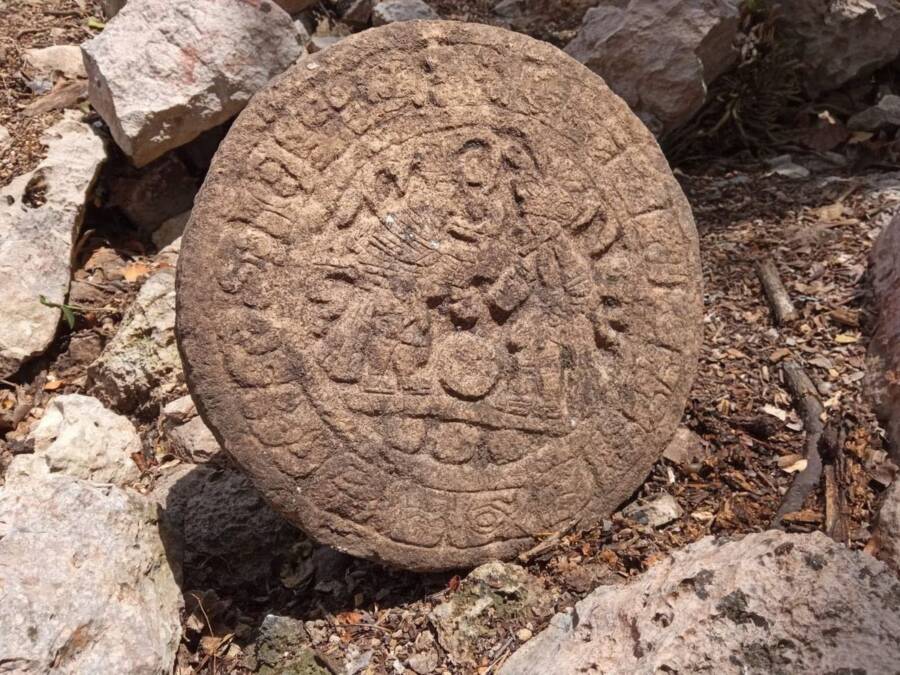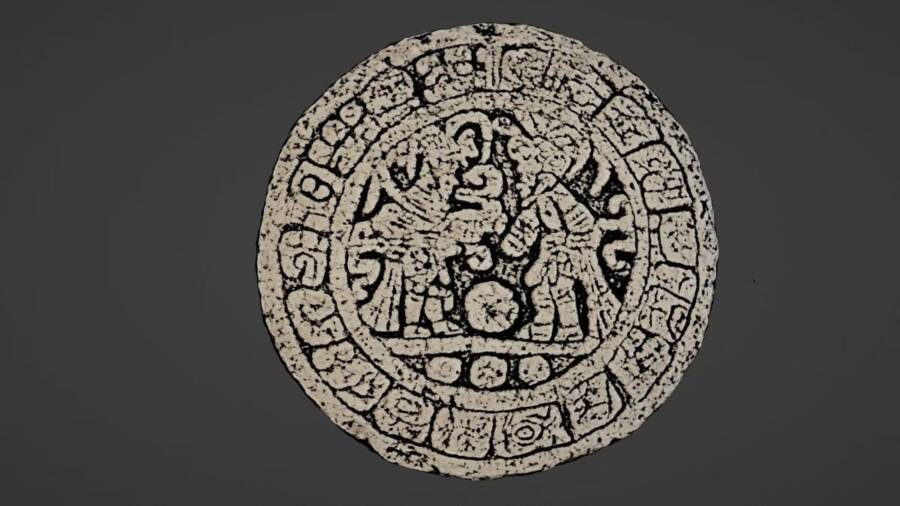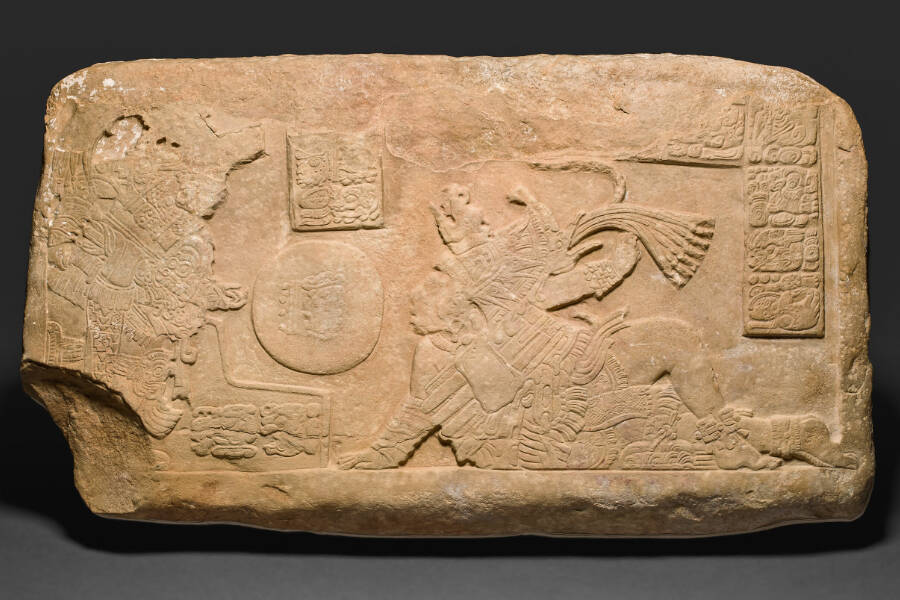The scoreboard, which features two figures standing near a ball as well as hieroglyphic writing, is thought to be 1,100 years old.

Mexico’s National Institute of Anthropology and HistoryThis unique artifact was discovered at the Maya Chichén Itzá archaeological site on Mexico’s Yucatán Peninsula.
From ancient Rome to the Middle Ages and beyond, archaeology has proven time and again that humans have always loved sports. This was proven true yet again recently with the discovery of a Maya “scoreboard” by archaeologists studying the Maya Chichén Itzá site on Mexico’s Yucatán Peninsula.
The BBC reports that the scoreboard was discovered by archaeologist Lizbeth Beatriz Mendicut Pérez, who made the striking find while examining the site’s Casa Colorada (Red House). Pérez found the stone about a foot and a half underground, where it may have fallen from a collapsed archway.
Believed to be around 1,100 years old, the circular stone is 12.6 inches in diameter and weighs 88 pounds. According to Mexico’s National Institute of Anthropology and History (INAH), it displays two figures who appear to be opposing players, alongside a ball and hieroglyphic writing. The two players are dressed differently, perhaps representing their individual teams.

Mexico’s National Institute of Anthropology and HistoryThe figures on the scoreboard are playing a traditional ball game with ritualistic undertones.
“The character on the left wears a feathered headdress and a sash that features a flower-shaped element, probably a water lily,” archaeologist Santiago Alberto Sobrino Fernández explained in the INAH statement.
He added: “At the height of his face, a scroll can be distinguished, which can be interpreted as breath or voice. The opponent wears a headdress known as a ‘snake turban,’ whose representation can be seen on multiple occasions in Chichén Itzá. The individual wears ballcourt protectors.”
But apart from the athletic iconography, it’s the writing on the scoreboard that has most intrigued archaeologists.
“It is rare to find hieroglyphic writing at this Maya site, and even rarer to find a complete text,” archaeologist Francisco Pérez Ruiz noted. “This hasn’t happened in 11 years.”
INAH researchers plan to photograph and study the text and icons, but while some questions may remain about the hieroglyphics, archaeologists have a good guess about the game portrayed on the stone scoreboard. It appears to depict two figures playing pelota which, according to Reuters, was a traditional ritualistic game played across Mesoamerica.
Indeed, the game included several ritualistic elements. Depending on the version of the game, pelota players used their hips, knees, and elbows to direct a rubber ball — whose movements may have represented the Sun crossing the sky — around a court that had connections to the underworld. The game itself represented grand battles between life and death, and there’s even evidence that Maya turned their deceased rulers’ remains into rubber pelota balls.

Getty ImagesA stone carving depicting figures playing a game of pelota.
According to the INAH, this scoreboard may have marked an especially important match.
“The epigraphic band consists of 18 cartouches with a short count date of 12 Eb 10 Cumku, which tentatively points to 894 A.D.,” Fernández explained in the INAH statement. In other words, the scoreboard may commemorate something related to pelota that took place in Casa Colorado in 894 A.D.
This Maya scoreboard is just the latest incredible discovery at the Chichén Itzá archaeological site. Chichén Itzá was a major city central to life in the Yucatán Peninsula until the 13th century, and its main structure, El Castillo, was built in such a way as to line up with the sun.
Finds like the stone scoreboard shed light on the rich history of the Chichén Itzá complex, where ancient Maya lived, died, worshipped, and perhaps eagerly attended fierce games of pelota.
After reading about the 1,100-year-old Maya scoreboard found at the Chichén Itzá archaeological site in Mexico, see how archaeologists unearthed a collection of “exceptional” 1,300-year-old Maya stucco masks. Or, discover the fascinating story of Camazotz, the terrifying ancient Maya god known as the “death bat.”





